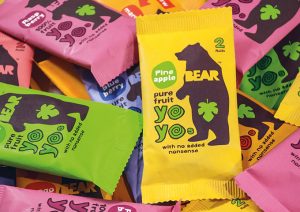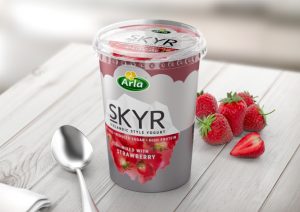The holy trinity of design effectiveness
How to create and sustain effective brands – originally written for Elmwood.
The Design Effectiveness Awards run by the Design Business Association (DBA) is a significant event in the industry’s calendar, where we celebrate the value that design brings to businesses. This year, Elmwood has been shortlisted for four awards, with the final results being announced in March 2017. And in total, they have won more of these accolades than any other design consultancy. Throughout the many years I’ve spent at Elmwood, I’ve come to understand what makes design effective, and how that translates into a successful design effectiveness award entry.
When it comes to winning, the DBA has stated that “successful projects require the integration of the design brief with business aims and objectives from the outset”. At Elmwood, the team is preconditioned to constantly question the brief. Often clients come to them with either a business challenge or a brief revolving around a design issue. It’s only through asking why they want to do this, that they’re able to establish clear design, marketing, and business objectives. By getting to the core of the problem, they can identify the real business challenge, and harness their creativity as a tool to get the desired outcome. It’s how they make a true tangible difference for our clients.
The stand-out projects that win the Grand Prix at the DBA’s Design Effectiveness Awards usually have three things in common, alongside clear objectives from the outset.
- Financial – they either make or save money
- Environmental – they have a positive impact on our planet
- Social – they have a positive effect on people’s lives
And, they can all demonstrate that they’ve had sustained business results.
Take Alloy’s BT Home-Hub, which won both the Grand Prix and product design category two years ago. The Home Hub was redesigned to fit through letterboxes, and had a huge impact on customers’ lives. They no longer had to wait at home for engineers or on hold for call centres. The redesign also cut the amount of packaging used and eliminated the need for call outs – reducing the number of carbon emissions from engineers’ vans by 13,147 tonnes per year. And, of course, saved BT millions in reduced service provision, manufacturing, and distribution costs.

While B&B Studio’s packaging for Bear managed to smash a 3 year sales target and encourage people to have one of their five a day, it was the brand’s ethos and production process that resulted in a crèche and childcare provision, that helps women who would typically struggle to find work, gain employment. Bear is also linked to the Forestry Commission, which supports their environmentally friendly and sustainable packaging policy. By telling their brand story consistently across packaging and other consumer touch points, Bear is able to offer a memorable and engaging brand experience that makes consumers want to be part of the good they’re doing.

Now to this year, and one of Elmwood’s shortlisted entries. Arla skyr is a new yoghurt that’s naturally low in sugar, fat free and high in protein. On top of its unique nutritional credentials, its production uses 50% more milk than any other type of yoghurt – which is good news for farmers, who get to see more of their milk being utilised. Through skyr, Arla has created a brand whose aim is to ‘secure the highest value for its farmers’ milk’, while ‘creating opportunities for their growth’, and meeting their business need of a category-adding brand. Having surpassed its sales target in year one, Arla skyr has become a £12m+ brand in just 13 months.

So, if that’s what makes design effective, how do you make design effective? I’ve been looking at Bain & Co.’s Elements of Value that essentially remodels Maslow’s Hierarchy of Needs around things that consumers value, in conjunction with examples of successful design.
Businesses that answer a consumers’ more basic and functional needs, tend to appeal to the rational side of the brain. If a product can save time or money, then it’s likely to be bought. The BT Home Hub is a great example of this. But when it comes to consumer wants and desires, it’s the experience offered by a brand that is the differentiator. For me, it’s not just about having a great product – it’s about how you make it relevant to consumers, via the brand. If a brand can elicit an emotional response, then it’s far more likely to generate a purchase or change in behaviour. Taking that one step further, if a brand can give consumers hope or motivation, then it has the power to change their behaviour and maintain it.
While we’re all familiar with Apple’s brand attributes, their products also address several of the elements on Bain & Co.’s model. Everything that comes from the brand is geared towards enabling life-changing values. Not only does Apple allow people to feel part of a club, but there’s an app for almost everything – from helping you to exercise more effectively to being more mindful or productive at work.
Apple is proof that a brand has the power to create loyal consumers and brand advocates. And it’s this that generates, not only increased but, sustained business performance. So next time you’re thinking about your own business challenge, consider the Holy Trinity of effectiveness – financial, environmental and social impact. If you can use your brand to trigger an emotional response, or allow consumers to feel like they’re doing their bit, all while having a wider impact on society or the environment, well – then you’re onto a winner.
